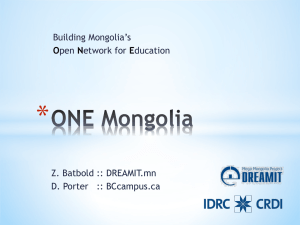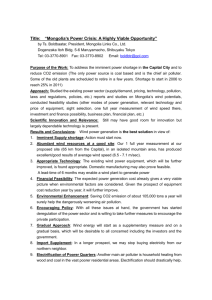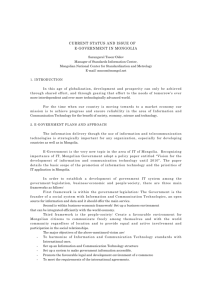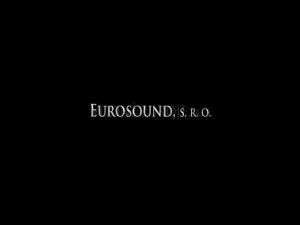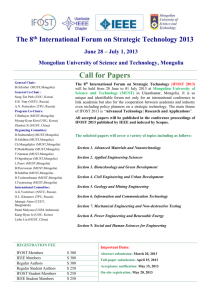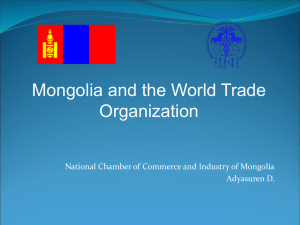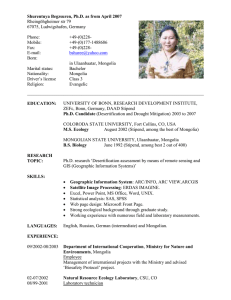Prof. Ts. ADIYASUREN, Ph.D.-GREEN DEVELOPMENT
advertisement
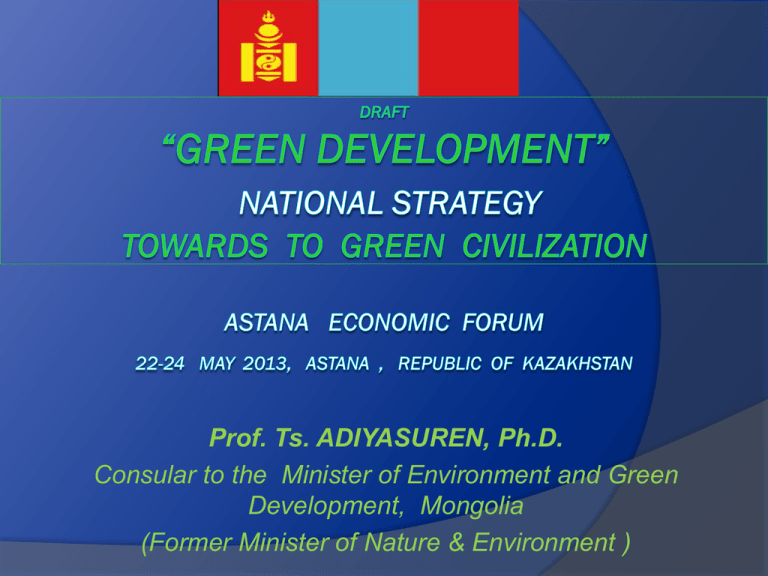
Prof. Ts. ADIYASUREN, Ph.D. Consular to the Minister of Environment and Green Development, Mongolia (Former Minister of Nature & Environment ) GEOGRAPHIC LOCATION: Mongolia lies in the heart of the North East Asia between the Russia in the north and the People’s Republic of China in the east, west and south. The terrain is landlocked mountainous and isolated from the sea at minimum 1600 km distance from Pacific Ocean others even greater. TOPOGRAPHY: TERRITORY: POPULATION: CAPITAL: ECONOMIC BRANCH: CLIMATE: NATURAL DISASTERS: Mountainous, hills & wide steppe 1,565,000 square kilometers 2.8 million Ulaanbaatar (>1,300,000 people) Livestock farming & mining Severe continental Vulnerable Mongolian 8.3 percent of the total territory is covered by forest, 81 percent is pastureland. About 90 percent of the total area is desertification potential. Main economic sectors in Mongolia are as follow: Agriculture ; Industry and Mining ; and others . Why Green Development in Mongolia????? There are noted 5 main factors of negative effect to Mongolian human development, imposed by the planet ecosystem change: Decrease of crop production, particularly in Mongolia agricultural and livestock productivity will be reduced; Loss of water safety and fresh water resource deficiency in the Mongolia; Increased vulnerability and risk climatic extreme events (drought, dzud, flood) and increased rates of damages to human fatality and property loss was observed in the last years ; Ecosystem degradation, green biomass depletion, forestland area reduction, plant outgrowth shortening; Human health risk and sickness rate have been increased in the country due to the adverse health impacts of climate change; Towards to Green Development On February 8th and 9th of 2010, the Inaugural Mongolia Economic Forum of 2010 was held in Ulaanbaatar under the auspices of the Prime Minister of Mongolia with active support of the President of Mongolia and Parliament of the Country. Green development was one of the key agenda issues of the 2011-2013 Business Forum. Green development can be understood and implemented in a simple ways: Economizing raw materials and property in your business activities. Providing the highest quality product and services accordingly to customer demands and interests Energy saving (energy efficiency) Water saving ( smart water consumption) Waste reduction (waste management) 4 R principles: Re- long use Production or Lengthening the product lifecycle Reducing Reusing Recycling or Reprocessing Key messages from Rio+20 Rio+20 “Future we want”: Green economy is a new tool for sustainable development and poverty eradication Governance for sustinable development Climate change is newly emerged challenge Sustainable Development Goals in post-2015 Sustainable Development Goals: specific for the Mongolian people Green jobs Healthy ecosystems Education Happy Mongolian people Secure food & medicine Health Clean air & water GREEN DEVELOMENT Political Governance for sustainability Equity Economic Human development Social Green economy Sustainability Resilience Health Green consumption Environmenral Cultural Natural-cultural Integrity Lagom swedish word, meaning just right! Stages of Green Development towards to Green Civilization I. 2013-2016 to establish basis of Green Development II. 2017-2021 to rich of some success for Green Development III. 2022-2030 to establish basis for Green Civilization Goals for Green development in Mongolia Climate compatible development Environmental Sustainability for Green Development Green economy and Finance Environmentally and Socially Responsible Mining Smart City and Rural Development Equity and Inclusiveness Science , Education,Culture and Heritage Good Governance for Sustainable Development 8 goals & ~40 target actions Goal 1. Climate compatible development with triple benefits for mitigation, adaptation and development increasing carbon productivity in energy sector 3 times by 2030 • • • • Air pollution Water shortage Ecosystem degradation and biodiversity loss Climate change vulnerability/Desertification BayanUlgii Huvsgul Uvs Hovd Zavhan GoviAltai Bulg an Arhanga i Baynah ongor Selenge Tuv Uvurhan Dundgo gai vi N W E S Umnugo vi Dornod Hentii Suhbaat ar Dornog ovi LEGEND < 0.25 0.26 - 0.35 0.36 - 0.45 0.46 - 0.55 0.56 < No data Drying trends Л. Нацагдорж 2012, ШУА-ийн мэдээ Social-ecological vulnerability Goal 3: • Green finance for Resource efficiency • PPP & Corporate social responsibility • Economic diversity • Resilience building against crisis, disasters • Manufacturing in Industrial sector will be to 40 percent by 2020 and 50 percent by 2050 • “Green Procurement” will be to 20 percent by 2020. Goal 4: Environmentally and socially responsible mining Goal 5. Wise utilization of income from natural resource, improve quality of life for citizen , eradicate poverty and ensure Social Inclusion &Equity • • Poverty double reduction by 2020 relative to 2010, poverty eradication by 2030 Expected longevity increase to 72 by 2020 and 75 by 2030 (currently 69: 65 for male and 73 for female) Goal 6. Make Education, Science, Technology, Standard and Innovation catalyst for green development, and protect traditional knowledge and state historic heritage • Nomadic civilization is basis for green civilization • Cultural-natural integrity • National natural and cultural heritage + mechanisms (technology, environmental and social tax systems etc.) = Green Civilization Goal 7. Develop ‘’smart city’’ based on citizen with comfortable, well-arranged housing, having better job opportunities and income, better infrastructure &road, sustainable waste management, good governance, fresh air, and healthy and security living of condition for human New green city building with university green campus, technology park and private sector Increasing of Quality of Agricultural Production for World Market Goal 8. Improve inter-sectoral intercommunication and coordination of all level of state organizations and form transparent, accountable and controlled ‘’governance’’ to implement the Green development strategy • • • • Support of Civil Participation Sustainable Development and non formal Ecological Education Develop Environmentally and Social Responsibility Companies Strengthening of network for grassroots in Traditional Land use Rahmet Thank you Баярлалаа!
